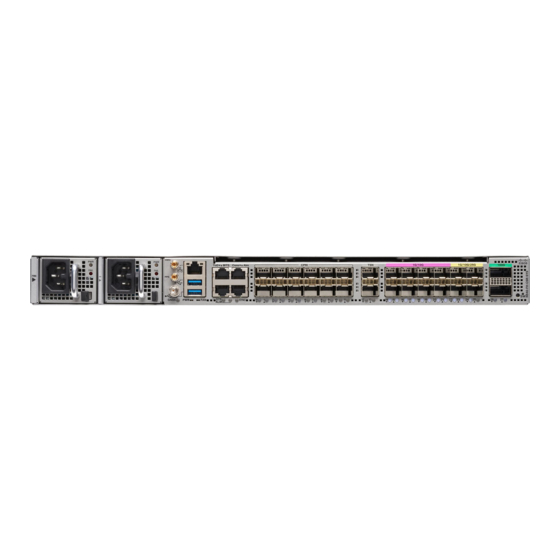Cisco N540-Front Haul Vorbereiten der Installation - Seite 6
Blättern Sie online oder laden Sie pdf Vorbereiten der Installation für Netzwerk-Router Cisco N540-Front Haul herunter. Cisco N540-Front Haul 14 Seiten.

Site Power Guidelines
• If airflow through the equipment rack and the routers that occupy it is blocked or restricted, or if the
• The site must be as dust-free as possible. Dust tends to clog the router fans, reducing the flow of cooling
• Enclosed racks must have adequate ventilation. Ensure that the rack is not congested because each router
• When mounting a router in an open rack, ensure that the rack frame does not block the exhaust fans.
• When rack-installed equipment fails, especially equipment in an enclosed rack, try operating the equipment
• Avoid installing the router in a location in which the router air intake vents may draw in the exhaust air
Site Power Guidelines
The chassis has specific power and electrical wiring requirements. Adhering to these requirements ensures
the reliable operation of the system. Follow these precautions and recommendations when planning your site
power for the chassis:
• The redundant power option provides a second, identical power supply to ensure uninterrupted power
• Connect each power supply to a separate input power source. Otherwise, it results in a total power failure
• To prevent loss of input power, ensure that the maximum load on each circuit is within the current ratings
• Check the power at your site before installation, and periodically after installation, to ensure that you are
• Provide proper grounding to avoid personal injury and damage to the equipment due to power surges or
Warning
This product requires short-circuit (overcurrent) protection to be provided as part of the building installation.
Install only in accordance with national and local wiring regulations. Statement 1045
Prepare for Installation
6
ambient air being drawn into the rack is too warm, an overtemperature condition may occur within the
rack and the routers that occupy it.
air through the equipment rack and the routers that occupy it, thereby increasing the risk of an
overtemperature condition.
generates heat. An enclosed rack must have louvered sides and a fan to provide cooling air. The equipment
generates heat near the bottom of the rack, which can be drawn upward into the intake ports of the
equipment above.
by itself, if possible. Power off all the other equipment in the rack (and in adjacent racks) to give the
router maximum cooling air and clean power.
from adjacent equipment. Consider how the air flows through the router; the airflow direction is front to
back, with ambient air drawn in from the vents located on the front panel of the router.
supply.
to the system due to a fault in the external wiring or a tripped circuit breaker.
of the wiring and the breakers.
receiving clean power. If necessary, install a power conditioner.
lightning striking power lines. The chassis ground must be attached to a central office or other interior
ground system.
Prepare for Installation
